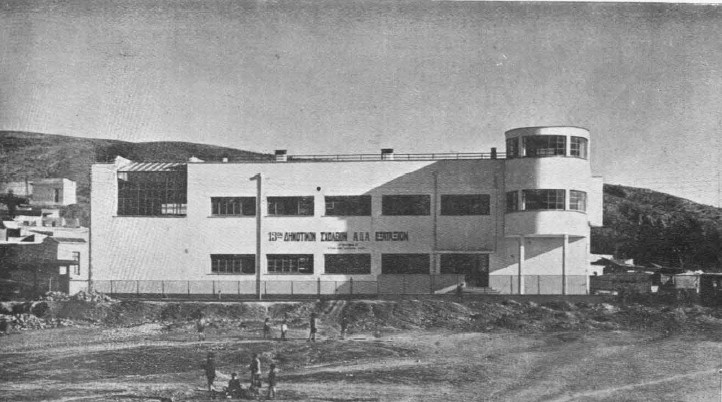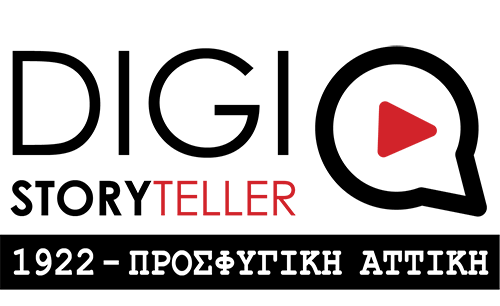The education of the refugees
One of the first concerns of the refugees, especially in the areas where groups of people from the same settlements in Asia Minor settled, was the operation of schools. This served both to maintain and consolidate social identities and hierarchies, and as a means of integrating refugees into their new environment. The experiences of refugees in their places of origin were varied: in cities such as Smyrna, Aivalıκ and Trebizond, educational institutions had emerged as extremely important factors in re-formulating and consolidating class superiority, creating social capital and promoting social mobility. At the same time, they were agents for the dissemination of national ideology and cultural change on the model of the European middle strata. In other areas, however, particularly in the countryside, schools were either not very widespread or merely met basic needs.

School complex in Gouva (today it houses the 91st Primary School of Athens “Mikis Theodorakis”). © Π. Καραντινός (επιμ.), Τα νέα σχολικά κτίρια, Αθήνα: Τεχνικό Επιμελητήριο, 1938, σελ. 71.
Given that most of the refugees that settled in Attica came from urban or semi-urban environments, the care for the operation of schools bridged existing experience with new needs. This was also evident in women's education. The need for many young women to be active in the labour market helped the generalisation of women's education, a phenomenon that had already appeared in the 19th century with the foundation of girls’ schools (parthenagogeia) in the urban centres of Asia Minor.
The Greek state tried to respond quickly to the educational needs of the refugees, which were necessary for their social, economic and cultural integration in the Greek state. The issue of language was particularly important, as many refugee groups from the interior of Asia Minor (e.g. from Cappadocia and Pisidia) had Turkish as their mother tongue, while others (e.g. from the Pontos) used idioms of Greek that were not easily understood by the “natives”. Moreover, education was one of the most important factors for the integration of refugee populations with their diverse cultural backgrounds into the context of Greek national ideology and identity.

Ο Χένρυ Μόργκενταου κατέβαλε μεγάλες προσπάθειες να ευαισθητοποιήσει το διεθνές κοινό για το δράμα των προσφυγόπουλων. Εδώ σε εκδήλωση στο Ζάππειο © Library of Congress
Thus, state objectives and the needs of the refugee population matched each other to a significant extent: education contributed both to the state policies for the management and utilisation of the new inhabitants , and to the integration and wider social acceptance of the refugees in an environment that was often hostile to them.
Similar problems to those of refugee housing were also encountered in terms of education. Other schools were housed in new makeshift structures, while the existing ones were unable to meet the new needs. The decisive step towards improving conditions took place during the prime ministry of Georgios Papandreou during the period between 1928 and 1932, when Georgios Papandreou was minister of education. At that time more than 3000 new school units were built, mainly by the architectural department of the Ministry of Education, which, with their modernist and functional style, were at the forefront of the international movement of “new architecture”. The effectiveness of this modernising project is evident even today: in the neighbourhoods of Athens one can see school complexes dating back to that era that are still in operation..

School complex in Gouva (today it houses the 91st Primary School of Athens “Mikis Theodorakis”). © Π. Καραντινός (επιμ.), Τα νέα σχολικά κτίρια, Αθήνα: Τεχνικό Επιμελητήριο, 1938, σελ. 71.

School complex in Nea Ionia (today it houses the 4th Primary School of Nea Ionia). © Π. Καραντινός (επιμ.), Τα νέα σχολικά κτίρια, Αθήνα: Τεχνικό Επιμελητήριο, 1938, σελ. 66.
